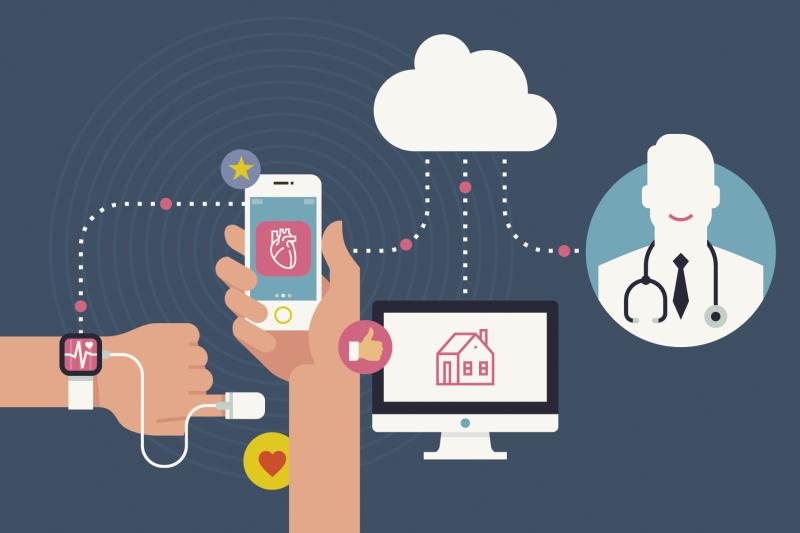
A wristwatch-like device that monitors pulse, breathing and blood oxygen levels of the user allows physicians to provide care remotely both in hospital and nontraditional settings, and may help in the fight against the coronavirus disease 2019 (COVID-19) pandemic.
Named SafetyNet, the telehealth platform equips a single patient-use (SET) sensor in a disposable fingertip attachment that functions as a tetherless pulse oximetry. It combines with a cloud-based remote data capture and surveillance system that can be accessed from a smartphone or any smart device.
Both the healthcare provider and the patient themselves can view the physiological data collected by the device via a mobile app. The users are notified twice daily to record if their symptoms have changed, in the form of questions such as, “Are you having trouble breathing?” and “What is your temperature?” If the changes signify worsening of condition or if the device detects shallow breathing or an unnaturally slow or accelerated pulse, the designated physician or staff is alerted. If they do not respond, the alert is then sent to the hospital.
The solution is designed to reduce the burden of surge of COVID-19 patients in hospitals, as well as limit unnecessary contact between patients and healthcare providers. SafetyNet is expected to enable expansion of remote patient monitoring into alternative care spaces, such as overflow locations, home-care settings and emergency recovery facilities.
“Many patients come to the hospital with COVID-19 symptoms and oftentimes they are admitted simply because clinicians feel the patient would not be safe at home without regular monitoring,” said Dr Peter Pronovost, chief clinical transformation officer (CTO) at University Hospitals (UH) in Cleveland, Ohio in US, in a press statement.
“As such, many patients are admitted where they can potentially expose other patients and the staff to the coronavirus. With Masimo SafetyNet, we can now send patients home with the security of the patient and their provider knowing their critical vital signs such as oxygen saturation and respiration rate will be safely monitored at home,” he added.
“This technology also serves as a cost-effective way to scale monitoring and increase capacity for hospitals,” Pronovost said.
The chief CTO pointed out that their hospital is applying the technology to the following patient groups: those who can be monitored at home rather than admitted, those who are discharged from the hospital and require home monitoring, those receiving care at home, and immunocompromised patients with COVID-19 who would be at greater risk if cared for in an inpatient setting.
“For our patients with congestive heart failure or chronic obstructive pulmonary disease, we can provide them with this remote monitoring capability so they do not risk a COVID-19 infection by being near potentially infected patients. Similarly, for patients with a confirmed COVID-19 diagnosis, we can appropriately isolate them from other patients while ensuring they have the access to state-of-the-art care for managing their health through the recovery process,” he said.
SafetyNet can be configured to accommodate specific institution protocols, individual patient needs, and any changes in COVID-19 guidance. This solution is a collaborative effort between UH and a medical technology company and is available globally.